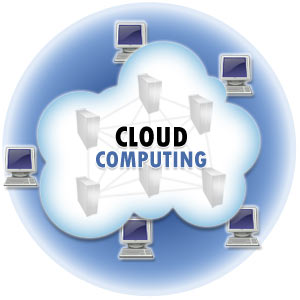 Cloud computing is changing the way companies access IT resources. Rather than build out their own infrastructures, firms can use a cloud computing provider to manage its IT infrastructure in a more affordable manner than standard deployment. The provider then delivers those IT services via the Internet.
Cloud computing is changing the way companies access IT resources. Rather than build out their own infrastructures, firms can use a cloud computing provider to manage its IT infrastructure in a more affordable manner than standard deployment. The provider then delivers those IT services via the Internet.
Essentially, the cloud computing model encompasses all or most of the software and systems a company uses, including storage platforms, disaster recovery, complex analytic programs, and even word processing.
Despite the fact that the supplier is remote, cloud computing, which needs virtualization and high-speed networks, makes it appear to the end-user that the processing is happening locally. The goal of cloud computing is to provide people with scalable access to computing resources and IT services.
In most cases, the hardware behind the cloud is managed by a service provider although a firm could serve as its own cloud provider.
Cloud services can public or private.
A public cloud serves anyone via the worldwide web. For example, Amazon’s web services represent the largest public cloud provider. However, most securities trading firms have avoided the public cloud option, citing reliability and privacy issues.
The private cloud option, on the other hand, is a private network that only supplies secure services to a limited group of people.
There are three primary types of cloud computing: infrastructure-as-a-service (IaaS); platform-as-as-service (PaaS); and software-as a-service (SaaS).
IaaS is the most basic cloud model, where a company can pay for as much hardware processing capacity as needed. This “pay for what you use” model makes IaaS similar to purchasing electricity, and is therefore commonly referred to as “utility computing.”
In PaaS, the computing software is provided by a service provider and the consumer can then customize the software by controlling settings. The host simply provides the consumer with the server and storage services. In this sense, PaaS users can use cloud applications without buying the product’s software.
In SaaS, the application is directly made available to customers and the costs are lower for the providers. Other benefits of SaaS include global accessibility and easier collaboration and administration as all users on the network have the same software.
Other variations of the cloud computing model that are growing in popularity include security-as-a-service (SECaaS) for managed security services; application programming interfaces (API)-as-a-service (APIaas); and data-as-a-service (Daas).
Need a Reprint?
Leave a Reply